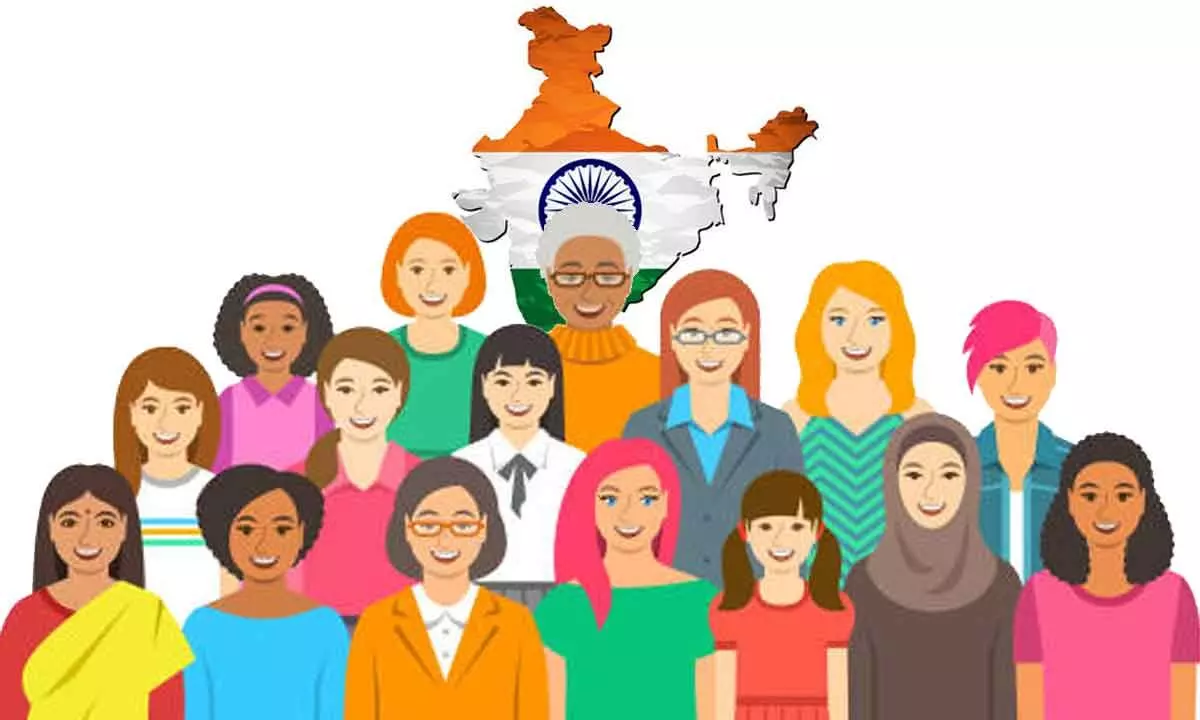Live
- They always want me to win, and now I feel lucky to have been offered a story like ‘Zebra’: Satyadev Kancharana
- ‘Democracy first, humanity first’: PM Modi in Guyana's parliament on two countries' similarities
- PKL Season 11: Telugu Titans register third straight win to top standings
- Is Pollution Contributing to Your COPD?
- NASA Unveils Underwater Robots for Exploring Jupiter's Moons
- Additional Central forces arrive in violence-hit Manipur
- AR Rahman and Saira Banu’s Divorce: Legal Insights into Common Issues in Bollywood Marriages
- 82.7 pc work completed in HPCL Rajasthan Refinery area: official
- Curfew relaxation extended in 5 Manipur districts on Friday
- Tab scam prompts Bengal govt to adopt caution over fund disbursement
Just In
India won’t develop, unless women valued more


Gender parity globally has recovered to pre-COVID-19 levels, but the pace of change has stagnated as converging crises slow progress, according to the...
Gender parity globally has recovered to pre-COVID-19 levels, but the pace of change has stagnated as converging crises slow progress, according to the World Economic Forum’s Global Gender Gap Report 2023. The overall progress in 2023 is partly due to improvement in closing the educational attainment gap, with 117 out of 146 indexed countries now having closed at least 95% of the gap. Meanwhile, the economic participation and opportunity gap has closed by 60.1% and the political empowerment gap by just 22.1%. Parity has advanced by only 4.1 percentage points since the first edition of the report in 2006, with the overall rate of change slowing significantly.
Closing the overall gender gap will require 131 years. At the current rate of progress, it will take 169 years for economic parity and 162 years for political parity. “While there have been encouraging signs of recovery to pre-pandemic levels, women continue to bear the brunt of the current cost of living crisis and labour market disruptions,” said Saadia Zahidi, Managing Director, World Economic Forum. “An economic rebound requires the full power of creativity and diverse ideas and skills. We cannot afford to lose momentum on women’s economic participation and opportunity.”
The report was particular about India regarding the economic parity. But, studies like these do not really reflect the ground situation. Take for example our own country. We are aware of the fact that women are ill-treated in every sense here. In fact, women in India face discrimination on several grounds and more so on caste grounds, too. The UN studies or other such studies should also take into account caste discrimination.
The Global Gender Gap Report, now in its 17th edition, benchmarks the evolution of gender-based gaps in four areas: economic participation and opportunity; educational attainment; health and survival; and political empowerment.
Gender discrimination is a significant issue in India, and women in particular face numerous forms of discrimination and inequality. Some specific examples of gender discrimination in India include. Women here often earn less than men for doing the same work, and they are also underrepresented in higher-paying jobs. According to the latest World Inequality Report, men in India earn 82% of the labour income while the share of women’s earnings stands at a mere 18%. Girls often do not get the same education as boys, which causes a big difference in literacy rates between men and women. In India, 187 million women are illiterate, making up a third of all illiterate people in the world. There is a 24 percentage point difference in literacy rates between men and women in India: about 75% of men are literate, while only 51% of women are literate.
Violence against women is a major problem in India. According to the National Crime Records Bureau, there were over four lakh reported cases of violence against women in India last year. This includes cases of sexual assault, domestic violence, and other forms of abuse. The actual number of cases is likely much higher, as many incidents of violence against women go unreported. One reason for this is that there is often a strong cultural stigma attached to women who have been victims of violence, which can discourage them from speaking out or seeking help. In addition, we have health care discrimination which gets compounded by lack of proper transportation, too. Above all, societal restrictions on women because of customs, traditions etc are on a higher side here. Such surveys don’t really count several of these factors and remain half-truths.

© 2024 Hyderabad Media House Limited/The Hans India. All rights reserved. Powered by hocalwire.com






